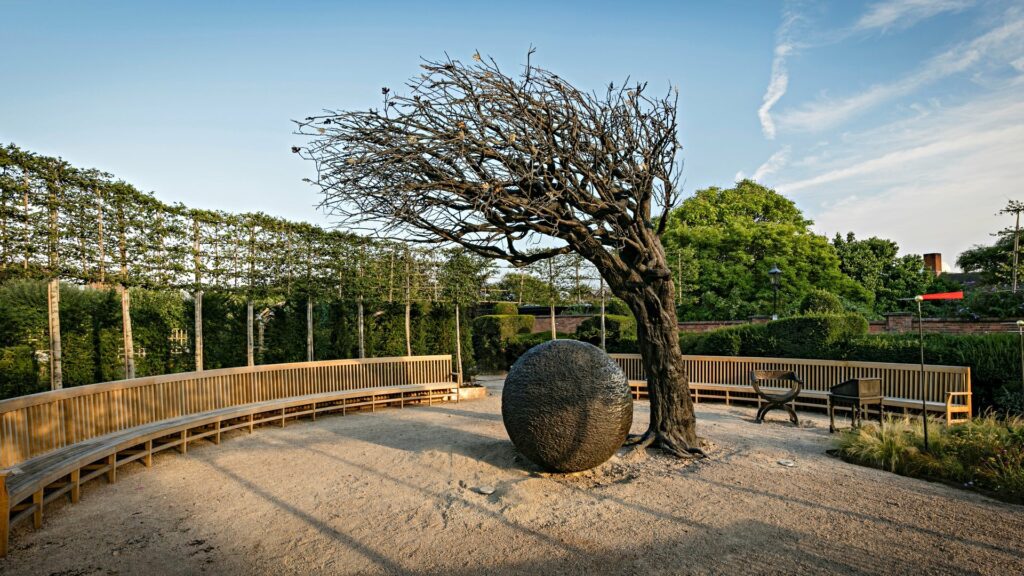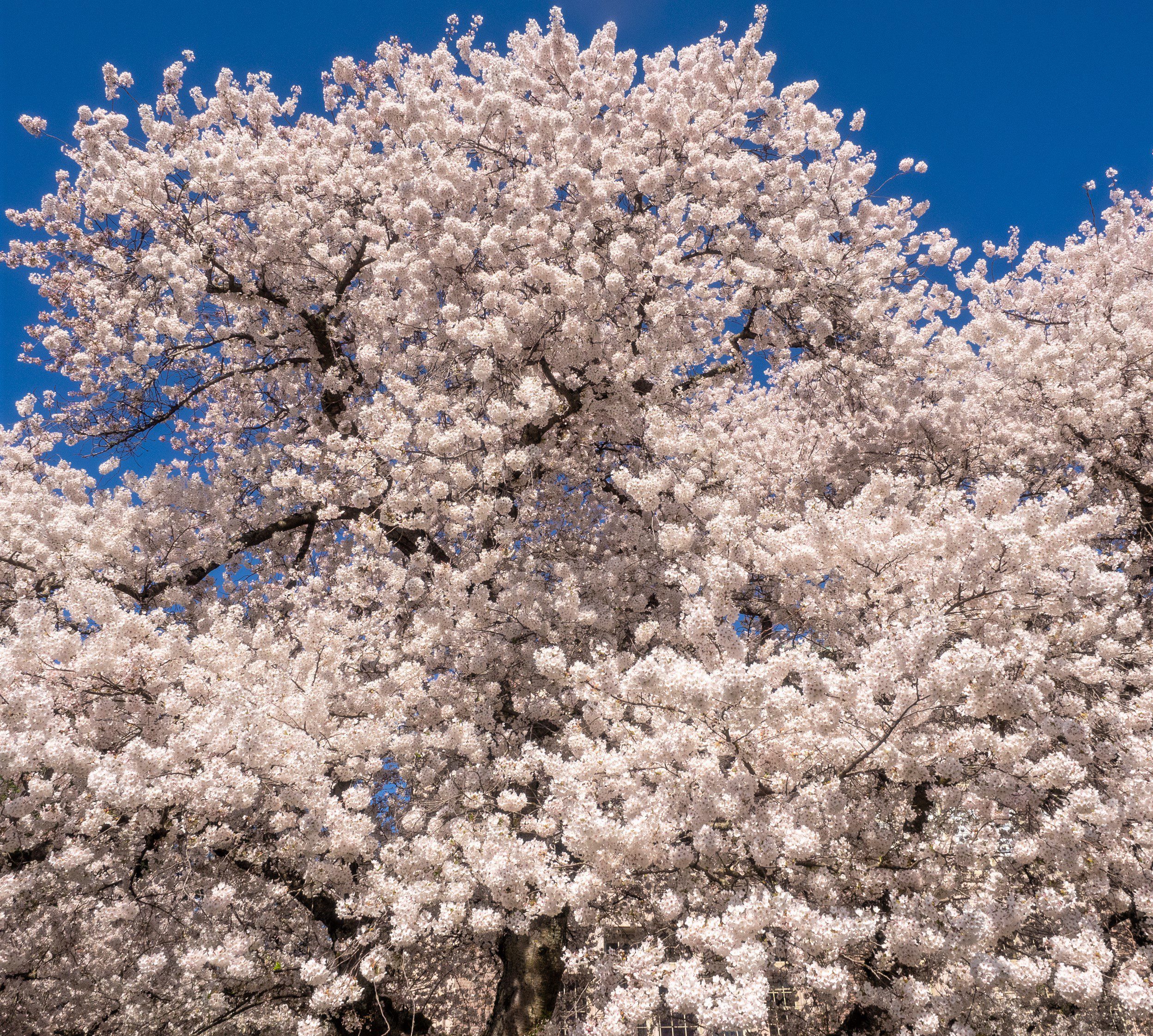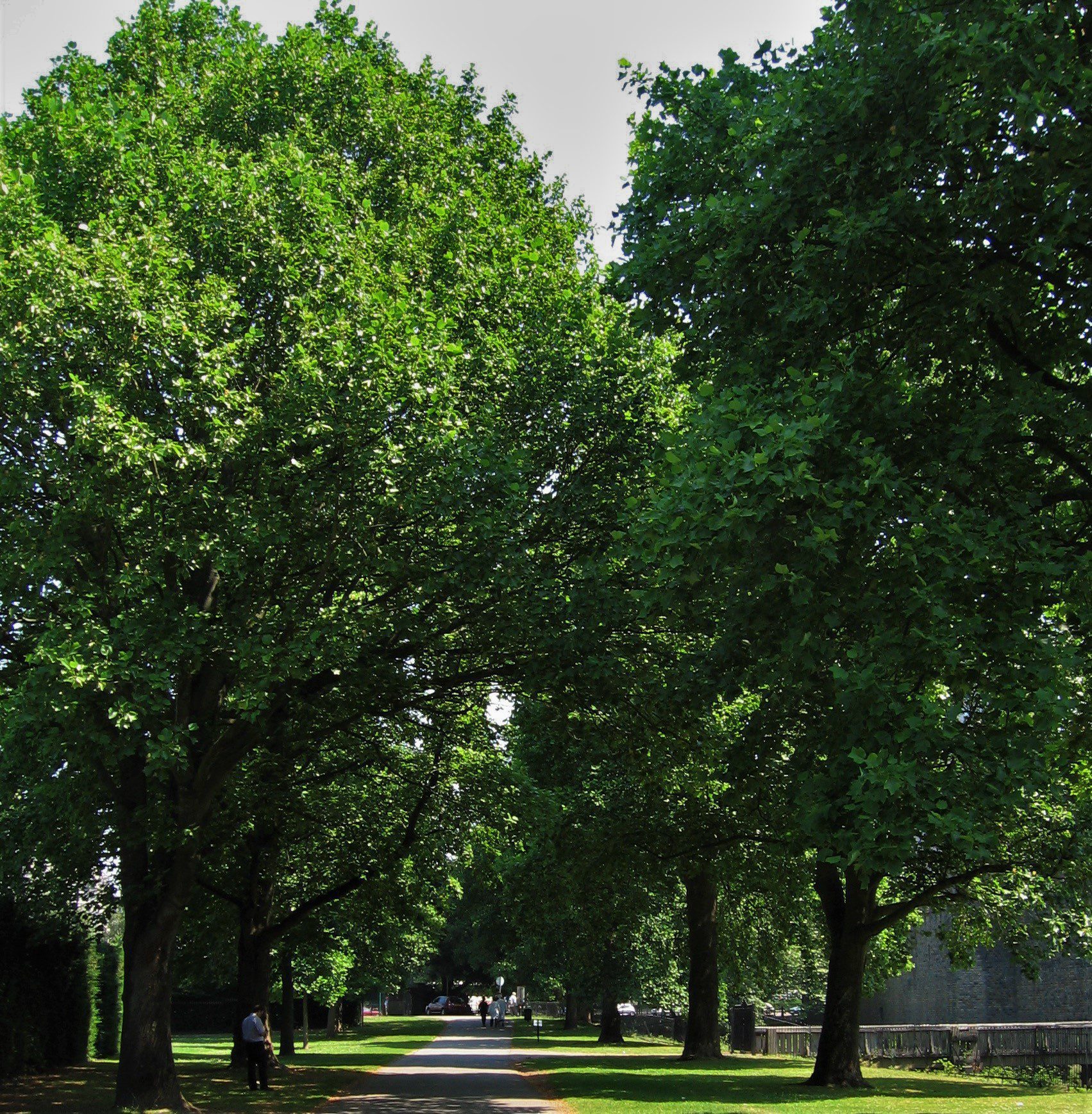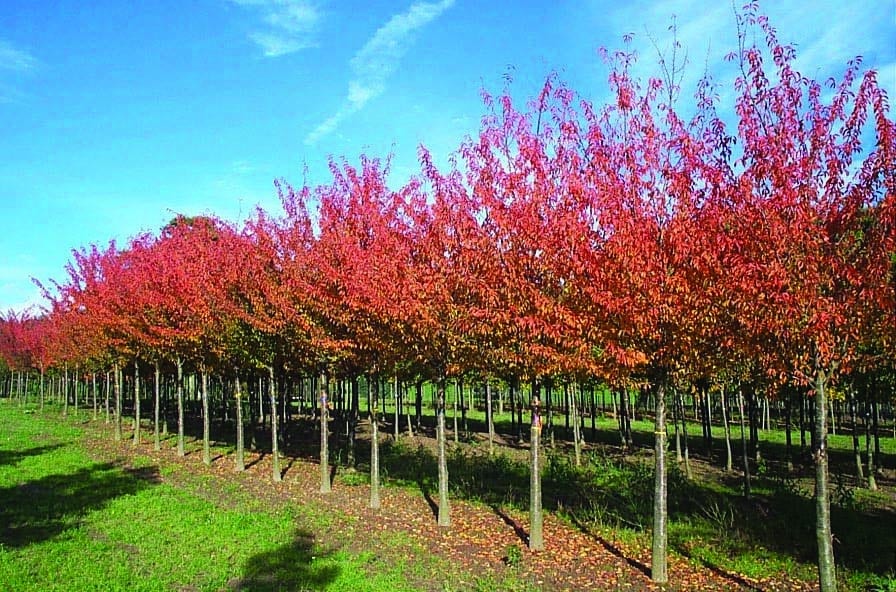Every tree planted should be highly valued for its natural beauty and huge environmental benefits, which get greater with time and maturity. Trees give scale and impact to a new landscape setting. Sometimes, through selection of semi-mature trees, particular historic varieties or unique shapes, trees can emphasise and continue the historic importance of a setting. Discover the importance of designing with feature trees.
Fabulous Fruit
Hillier has a range of decorative mature, ex-orchard fruit trees. These are around 20 years old and produced in Spring Ring containers which help the trees quickly establish strong root systems. Each fruit tree is an individual with lots of character from years of pruning.
Mature trees have become very popular with Hillier customers and have been used in community gardens, corporate office court yards, urban pocket parks and schools. The lovely flowers brighten up any space and it is fascinating to watch the fruit grow — and what a lovely treat to be able to pick your own apples from the trees.
One notable housing project in Rugby, designed by BMD (Bradley Murphy Design), used a natural grouping of 40 mature fruit trees to give structure and character at the entrance to the new major housing development. The fruit trees reflected the history of the site and had been renowned, locally, for its old orchards. It created a fantastic, character-filled area for the new residents to enjoy.
The range of semi-mature fruit trees available from Hillier varies, but there is always a good selection of apple varieties. Contact us for our latest availability list of our semi-mature fruit trees.
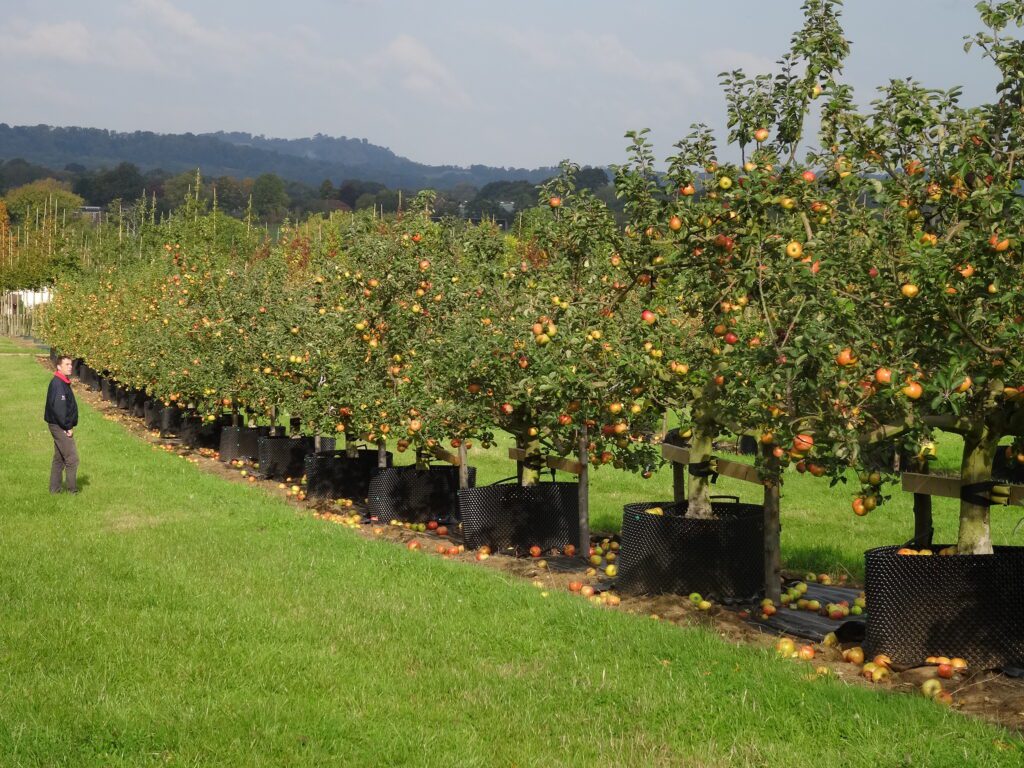
Design Gems
The creation of the Queen Elizabeth Olympic Park in London saw the planting of thousands of beautiful semi-mature trees. Within the structural planting of new woodlands and avenues were many lovely design features and clever use of trees.
One such feature was the seating and play area, which is close to the Olympic Stadium. This section of the park is defined by closely planted, single species – in this case, Prunus serrula. LDA selected this tree for its beautiful, shiny, rich red mahogany-coloured bark, which continually peels to reveal russet amber. The bark curls and remains on the trunk to catch the light. Planting trees together amplifies the effect of the bark, creating beauty all year round. The canopies merge and the individual trees blend and work together as a unit. Hillier, in collaboration with LDA, personally selected each tree to ensure the smooth trunks and consistent clear stem height. The trees were then secured with short stakes stained black for a polished finish.
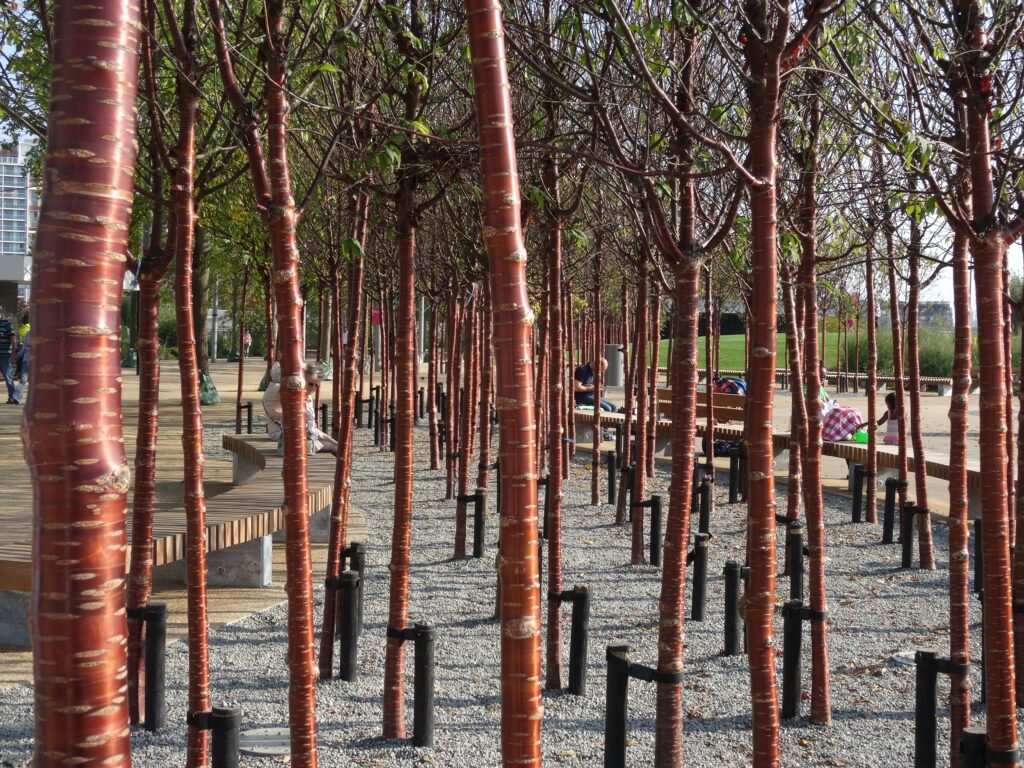
Unique Requirements
Hillier grows many pre-shaped trees, such as pleached trees, cubes, globes or archways in a range of species. People often use pleached trees to define a space, such as a courtyard, or to provide additional height and screening.
We’ve had many interesting and famous visitors to our nurseries over the years. This includes a visit from a theatrical designer with Landscape Architects Gillespies. Their project was for Shakespeare`s New Place in Stratford–upon-Avon, the writer’s family home from 1597 until his death in 1616. They eventually demolished the house in 1759. Instead of producing a replica of the building, the vision was to create a garden, commemorating the sites importance. This would allow visitors to make their own personal connection with Shakespeare. After discussing the horticultural, artistic, and dramatic possibilities, they selected a number of pleached trees. These now form a dramatic circle in the centre of the garden.
Shakespeare`s New Place is a fantastic success, hugely popular with its many visitors. We take pride in playing a part in this unique and historic project.
